The Return of David: The State of Indie Games in 2023 and Beyond
There was a moment in 2023 when all eyes in the video game space were on the indie scene — but for all the wrong reasons
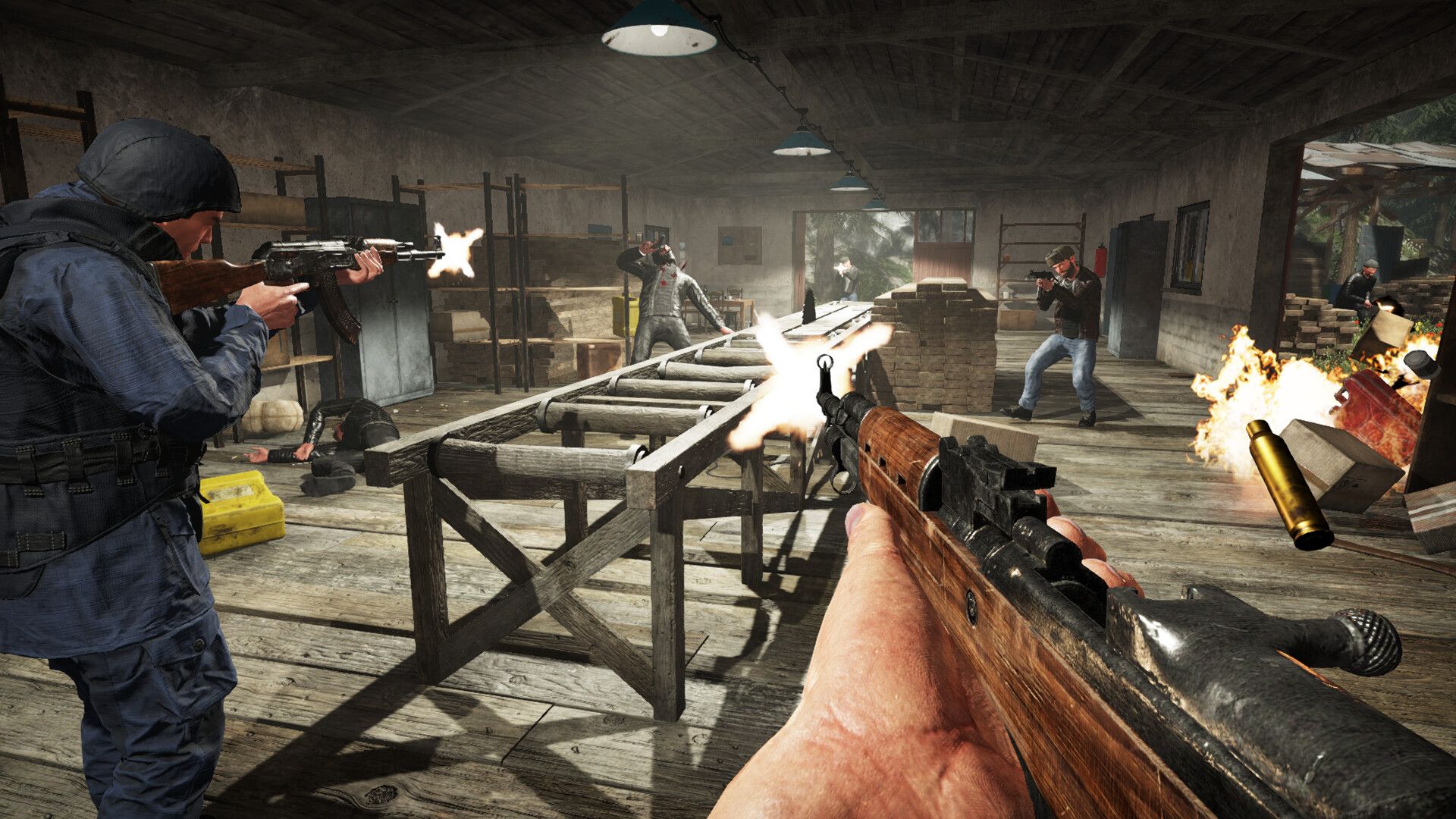
Unity's announcement of a new pricing model in September sparked an immediate backlash from small developers and their supporters. Unity has since partially walked this back, but the memory lingers. In the words of Deadlink developer Grzegorz Michalak:
“Recent industry controversies have sent ripples throughout the community, affecting decisions made by both small and large developers...
Today, most games are closely tied to the game engines, and devs choose not to build their own from scratch. Therefore, we find ourselves somewhat dependent on the decisions made by our chosen engine providers.”
Everyone now sees that the industry can change in ways that profoundly affect small developers. New developers started looking for different engines and existing teams adjusted their budgets, anticipating a change in the scene.
Unity aside, 2023 was a pretty good year for indie games overall. There were quite a few games that cleared the million-unit mark, even without any of the big-time releases that draw the attention of the gaming press. Overall, smaller games now make up a larger proportion of the overall market than they did a few years ago when my first State of Indie article was released. These games — which are coming out faster than ever — are still just a tiny sliver of the whole industry, lost in the long shadows cast by AAA developers.
What does the future hold for small developers? Who are going to be the winners in the next few years? What does it take to become a legend in an ever more crowded environment?
Table of Contents
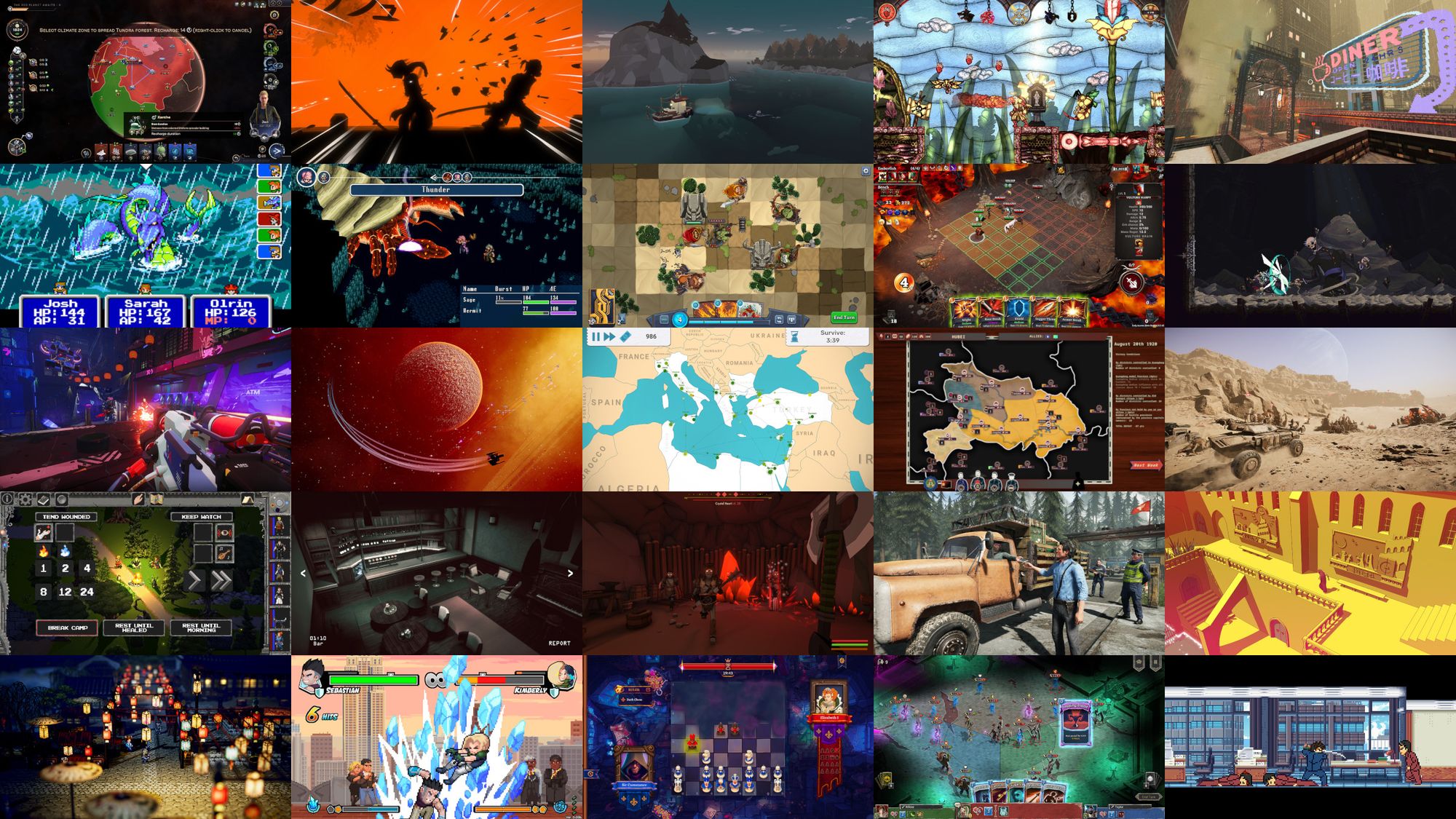
Today, we will examine the current landscape of the industry and the outlook for indie developers. We’ll explore the thriving genres that have characterized the indie scene, as well as the overburdened genres that are becoming harder to crack. We’ll also examine the economics of Steam and how rising costs pose a challenge for smaller developers. Additionally, we’ll look at the discoverability challenge and the role that small publishers and promotional events play in aiding or hurting newcomers in gaining recognition. Following that, we’ll dust off the crystal ball and speculate on possible futures for the indie sector.
I’m not going on this journey of exploration alone. For this article, I surveyed several small and solo developers who released a game in 2023. The following groups and individuals collaborated with me:
- Asteroid Lab, developer of Terraformers
- Bevel Bakery, developer of Sclash
- Black Salt Games, developer of Dredge
- Bonus Level Entertainment, developer of Saga of Sins
- Cole Powered Games, developer of Shadows of Doubt
- Critical Games, developer of 8-bit Adventures 2
- Drattzy Games, developer of Alterium Shift
- D20Studios, developer of Abalon
- Emberfish Games, developer of Hadean Tactics
- Game Kitchen, developer of Blasphemous 2
- Gruby Entertainment, developer of Deadlink
- Hutlihut Games, developer of Void Crew
- KishMish Games, developer of Fly Corp
- Maestro Cinetik, developer of Rise of the White Sun
- Martin Melichárek, developer of Silica
- Mike Robins, developer of Caves of Lore
- Notovia, developer of I'm on Observation Duty 6
- Phodex Games, developer of RAIDBORN
- PlayWay, publisher of Contraband Police
- Rundisc, developer of Chants of Sennaar
- Spiral Up Games, publisher of Wandering Sword
- Statera Studio, developer of Pocket Bravery
- Tall Troll, developer of Dark Chess
- Thing Trunk, developer of HELLCARD
- Yeo, developer of Fading Afternoon
Let's kick things off with a simple question: How are things going overall?
Too busy to read? Listen to the article here. Source: Author.
Outlook: Not Great, but Far From Hopeless
The general narrative of the indie game scene is one of a fast-growing group of rebels running rings around the AAA industry. We think of them as tens of thousands of Davids forever fighting the good fight against the greedy Goliaths ruining the industry. This narrative focuses on a small number of highly successful games, often discussed by people who mainly talk about AAA games.
So what do the actual developers have to say? This is where the narrative gets a little complicated. Last year, the consensus was that things were pretty dismal; this year, the responses are much more mixed.
In 2022, Indie Bandits did a survey of independent developers in which nearly two in three said that their game had underperformed their expectations. These games didn't fail, but the outcomes were disappointing. In a world where indie games go unnoticed unless they sell a million copies, expectations might be too high.
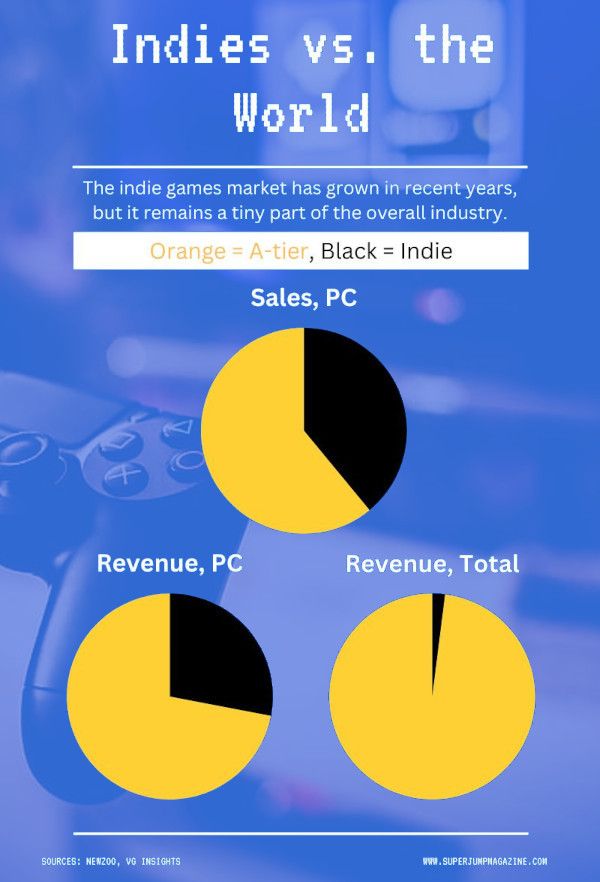
Certainly, my survey suggests that this may be the case, as respondents who expressed satisfaction with their game's performance had more realistic expectations. Markus Failer of Phodex Games, for example, expressed within the survey, '[RAIDBORN] did perform better than I would have expected, although my expectations were pessimistic.
With Dredge, Nadia Thorne of Black Salt Games shared, "It did [perform as well as we'd expected], but as the first title from our no-name studio, my expectations were quite low."
Even in a tough market, developers are not necessarily devoid of hope. Jevgeni Orehhov of Tall Troll Games relayed, “Definitely, we would be happy if the game performed better than it did. [However], we understand the reasons behind it so we take it as a great achievement to release our first game on PC and gather experience along the way.”
Ross Przybylski of D20 Studios included, “My launch didn’t perform as well as I’d initially aimed for, but at the same time, our game has done exceptionally well for a first-time publication on Steam from an indie developer, and, with continued updates to the game and participation in Steam events, the needle is continuing to move.”
For most of the developers with whom I spoke, the market is getting harder. “There has never been a time when more games were released,” Failer shared. “The more competition there is, the harder it gets, especially for small teams and solo developers. Of course, there are also more players than ever, but I feel the high number of competitors outweighs that.”
So how do developers make their games stand out in such a competitive marketplace? Who have been the winners and losers over the past year?
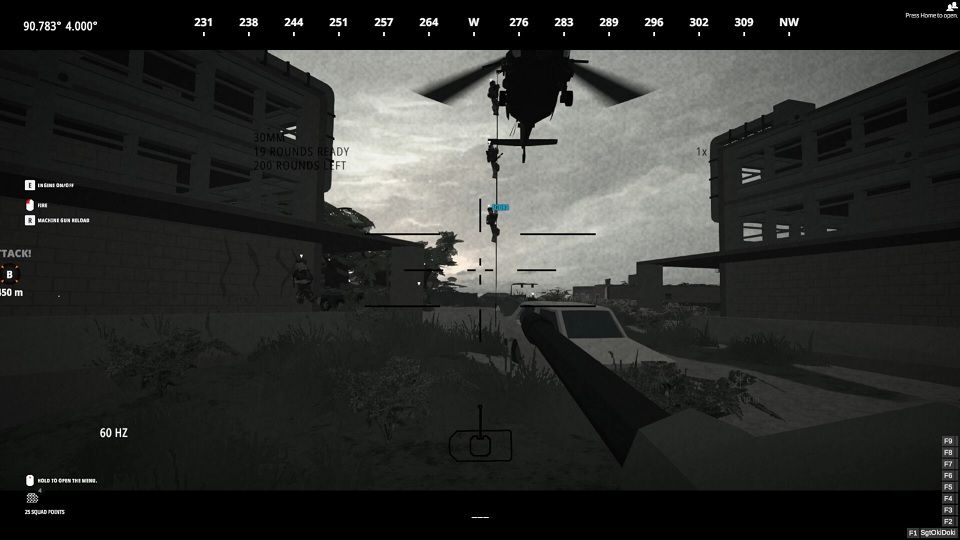
The Best and Worst Genres for Indie Games
The story of the indie market is the story of genres — what’s trending, what’s dying, and what’s about to break out?
Looking at the success stories for 2023, there are some familiar sights. The dominant games were those with horror elements, including The Outlast Trials, Barotrauma, Labyrinthine, and Demonologist. Many of these games are centered on cooperative multiplayer gameplay, with co-op being a significant feature. And, of course, we can’t overlook mentioning BattleBit Remastered, which stands out as one of the year’s most prominent indie hits.
On the other hand, many traditional genres made triumphant returns because of indie developers. Buoyed by the “boomer shooter” trend, first-person shooters came back in a big way, with games like Turbo Overkill and Deadlink leading the way. Traditional RPGs and TRPGs made a similar splash, led by titles such as Sea of Stars and Wandering Sword. Surprise-hit Pizza Tower shattered the conventional wisdom that old-school platformers cannot sell. Games like Tape to Tape, Golf It, and Undisputed were unexpected showings in the traditionally AAA-dominated world of sports games.
However, from a developer's perspective, it is never as simple as identifying a trend.
The long development cycle of games by small teams means that catching a trend is a matter of luck as much as anything. You might release a game in an emerging, underserved genre – such as Shadows of Doubt, which has benefitted from a recent boom in simulationist games. Such fortunate timing is something one dreams of but can't very well plan for.
On the other side of the coin, you might release a game in a genre that’s about to be swallowed up by the AAA companies. Statera and Bevel Bakery found themselves in a situation where they released new fighting games just as several well-established fighting game franchises launched new titles. At best, you can watch the gaming news and try not to release your own game when the bigger ones launch — if that’s even an option.
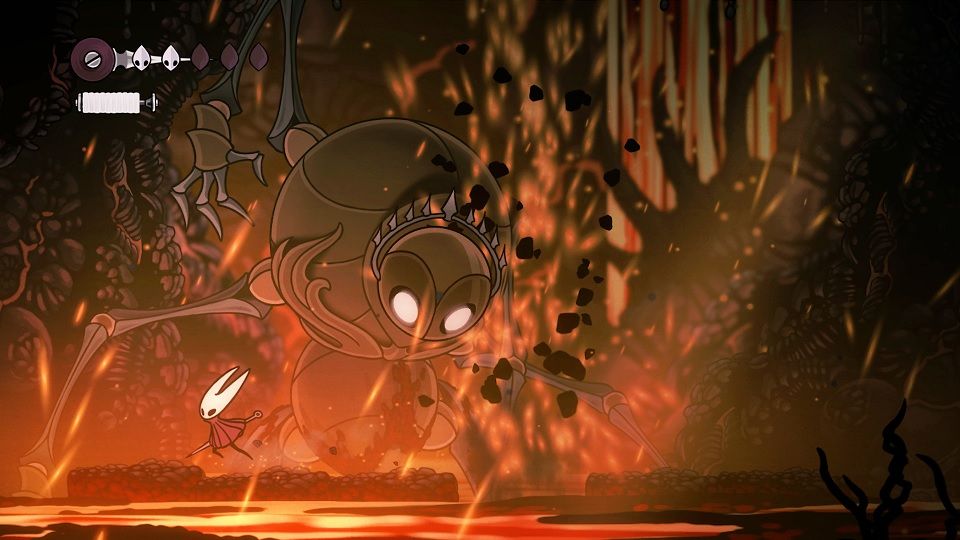
Even having a game in a popular genre or subgenre can be a burden. GameDiscoverCo featured an article on the underperformance of some recent Metroidvania platformers. It's a popular subgenre, but one that's very "top-heavy," meaning that most of the attention falls on a small number of high-profile titles. In 2023, releasing a game like this means facing competition from numerous similar new games and popular titles like Hollow Knight, Dead Cells, Bloodstained, Ori, and more.
Grzegorz Michalak reports a similar issue in the FPS market:
“It’s already saturated with both old-school ‘boomer shooters’ like Cultic, Boltgun, and Turbo Overkill, and high-production-value titles such as Doom, Call of Duty, PUBG, and Apex... The challenge with FPS titles in this category is that they often require serious budgets for 3D graphics, animations, and visual and sound effects, which are crucial for delivering an engaging gaming experience. Moreover, standing out with innovative gameplay is risky, which is why many AAA titles tend to avoid it.”
Such is the nature of gaming trends. As recently as two years ago, deck-builders were an emerging and highly lucrative type of game; with the market for these games more mature, it’s become very hard to stand out, and the mechanic has become an indie cliche. A similar trend is unfolding within the action roguelike genre, and I expect it won’t be too long before we grow weary of games tacking the word “Survivors” awkwardly onto their titles.
Of course, even within a trendy genre, results are bound to vary based on the specific game. "Performance is heavily dependent on what each individual game has to offer," says Lili Lisboa of Emberfish Games. "The same thought applies to the deck-builder and the roguelike genres, players tend to tire of individual games but not so much the subgenres, so there's always someone looking for another game that has a strong hook and offers a different/new experience for the genre."
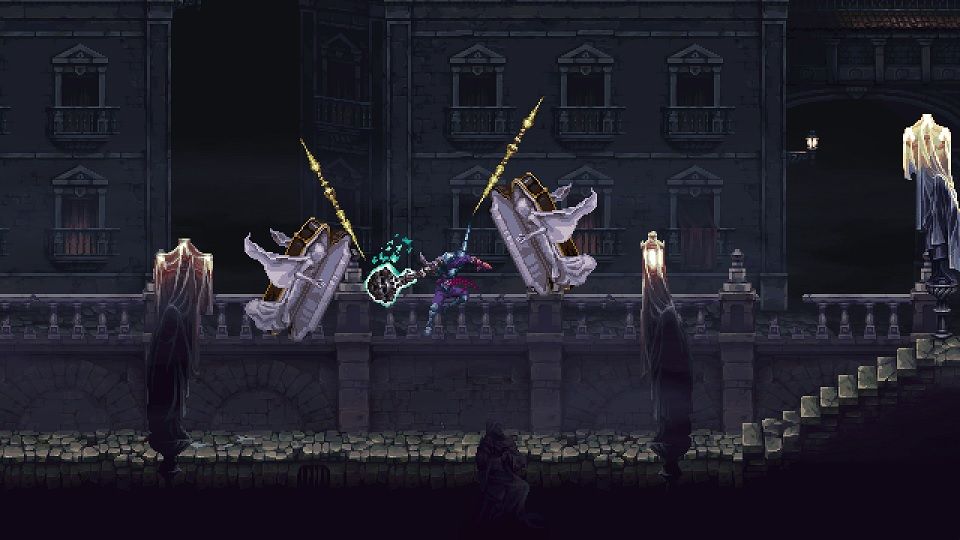
I heard something very similar from Enrique Colinet, the lead level designer for Blasphemous 2, easily one of the most high-profile Metroidvanias released this year:
"There is a pretty hardcore audience that loves Metroidvania games, but standing out in this genre is quite hard because said audience is very demanding...if you manage to release an interesting product that convinces players at first, even if it feels incomplete for them, they will not mind waiting for updated content, so they have an excuse to play the game again."
Adding to this is the complexity of the audience for indie games. XSolla's recent survey reveals interesting priorities and preferences of avid indie game buyers. Buyers prefer open-ended gameplay, but also want carefully crafted stories; they want to have their skills challenged, but also like to use video games to relax; they like the innovative nature of the indie market, but are also nostalgists drawn to games from earlier generations.
In short, they are varied in their tastes and can appreciate a wide range of game styles. However, the biggest spenders on indie games are often the biggest spenders on mainstream AAA titles as well.
Those who are most intense in their love of video games are the same ones who watch the market enough to know about these little-promoted smaller games. Only the hardcore fans really pay attention to indie news.
Perhaps the best play for developers is to not worry too much about genre trends. “Popular genres change very quickly in the world of indie games,” Julien of Rundisc once shared. “In general, if you’re trying to get into a trendy genre, it’s already too late. So it’s a question we don’t ask ourselves too much. We think that whatever the type of game, the important thing is the quality it offers.”
Economics and Indie Game Price Points
Something interesting happened on Steam in 2022. According to VG Insights, game sales on the platform declined from 2021 to 2022 – 580 million to 535 million, a drop of about 8%.
We could attribute this to a post-pandemic regression to the mean, except that Steam’s revenues did not drop. For every other year, revenue and sales moved together almost perfectly, but in 2022 they made slightly more money on fewer sales. This means that people spent the same amount of money in order to buy fewer games.
It works out to an increase of about 11% per game, or 27% per game since 2018.
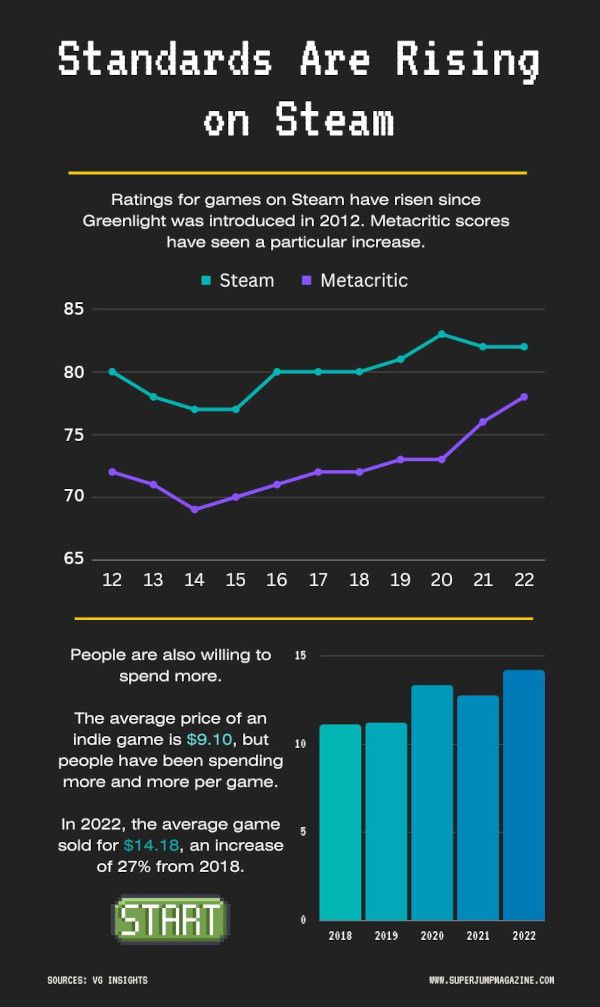
There are a few explanations for this. First, people may be purchasing more titles from AA and AAA developers, although other data contradict this point. Second, there’s a chance that people are buying fewer of the ultra-budget indie games. Finally, it could be that indie games are becoming more expensive.
Any of these would signal a significant change in the indie market. None of them would be all that positive for the developers.
Not everyone agrees with my analysis. Przyblyski writes:
"[It] is becoming increasingly difficult for indies to create larger scale games and far more profitable to focus on very tiny, low-budget games with highly original ideas and highly addictive and re-playable gameplay loops that can be developed in six months to a year. In other words, AAA are becoming bigger 'death star' type giants and indie need to become increasingly agile 'x-wing fighters' to remain competitive. The viable market for cruisers and frigates is waning."
Silica developer Martin Melichárek agrees with Przyblyski, "Long story short, I would actually say that for solo developers in particular, the situation in terms of tools and options available as well as the market are relatively favorable, but the mid-sized teams are having a tough time."
Both takes are consistent with a report put out by VG Insights in July, suggesting that the industry is being hollowed out. The economics are favorable for the world’s biggest companies and small and solo developers who can operate with minimal overhead. However, mid-sized companies suffer from an inability to compete on either price or production values.
"Indie game prices have progressively decreased over the course of the past decade with some stores offering games for free on occasion," says Melichárek. "This affects all teams who cannot increase their prices by having to either cut scope, content, or personnel."
"I presume players are usually seeing the price comparisons between games, and if games of similar style are priced in similar ways, it should be expected," says Mottzy of Drattzy Games. "The bigger problem overall is actually determining the price the market will bear, and that is a problem regardless of prices increasing over time."
Anecdotally, the rise in prices seems to be having an impact on developers, especially with reviews. I’ve noticed that people seem to give much more critical reviews to games priced at $30 or more. This is just my observation, supported by a recent survey commissioned by Humble Games, which shows that expectations increase when the price reaches $25. Of course, it’s reasonable to think that people expect more from a game that costs twice what they were expecting.
"It seems to me the relation to price doesn't have a lot to do with the actual game but more with how the game is perceived," says Alexis Giard of Asteroid Lab. "Thus if you are a 'small indie' you'll usually fall on the 20 USD or under price tag. Some larger/great indies might get away with 30USD, but then people have high expectations on both art, content, polish, and depth of the game and they can be a lot more harsh in their judgment. Anything larger (like 40 USD) is expected to be a triple I or double A scope of projects, in my opinion."
That points to another issue. Much as developers have certain expectations of how their games will be received, consumers have expectations as to what they're going to get for the price they pay. If those prices go up, people are going to expect even more. With prices for games (including indie games) outpacing inflation, expectations are bound to rise.
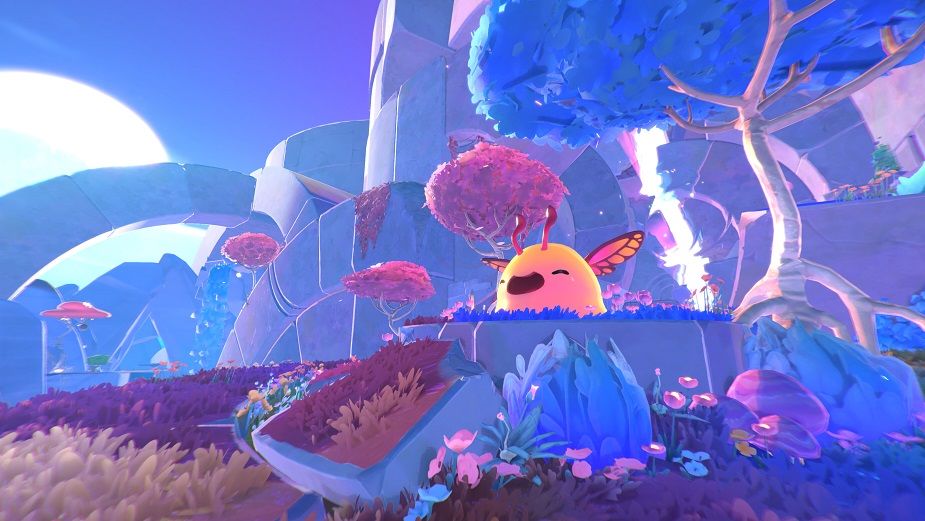
Rising Competition
Nick Popovich is a founding member of Monomi Park, the team behind the multi-million-selling Slime Rancher series. What he sees in the future of games is ever-growing competition.
"The industry is moving towards bigger budgets, longer timeframes, and fewer and fewer hidden gems breaking through all the noise," says Popovich. "There are over 250 new games added to Steam every week, and that’s just Steam! It’s very hard for your little game to become a breakout hit just by dropping it on the store and hoping for the best. You need to think big picture about how your game will seep into the consciousness of the public, because 99.9% of the time it won’t just happen."
Without question, the number one concern among small developers is growing competition in the market.
When we talk about competition, we mean one of two things. Most commonly, people are referring to quantity, the sheer volume of new titles hitting the market. The PC game boom is not only still going strong, it’s actually growing in strength. Steam is on track to see well over 12,000 new games in 2023 — as many games as were released over the entire Steam Greenlight program.
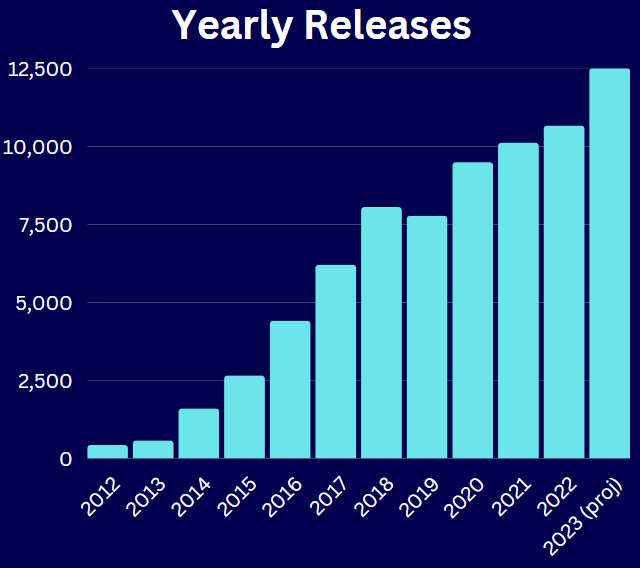
"The current market of games is something that is hard to analyze and understand," Sclash developer Bastien Bernard explains, "and while the AAA games just keep trying to be bigger and bigger and longer and longer, with rising and unreasonable production costs, in a world where our time is limited and the number of games infinite, the indie sphere suffers from its nonexistent barrier to entry, drowning the chances of a hit game for most developers because of the sheer amount of experiences out there."
The other aspect of competition is quality, and that's a little harder to pin down. Quality is subjective, but there is data pointing to an increase in quality over time.
Both player and professional review scores on Steam have been going up for the past decade. In particular, professional scores are up 6% on average since 2012. As indie titles have comprised more and more of the Steam catalog (over 98% by some estimates), people have found those games to be overall better.
From a consumer standpoint, this is all upside — everyone wants a better game, and the typical game is a lot better now than it was during the mid-2010s when the indie market was crushed under layer after layer of cheap asset flips. But to a developer, this means a higher bar to clear. It means that the rough, quirky game that could catch someone’s eye back in 2015 might be completely lost today.
"As some indie games and AA developers aim for higher and higher production values, it may become increasingly difficult for small indies with meager budgets to keep up with player expectations," Josh Hallaran of Critical Games relays. "I’ve spoken to multiple indie developers who are worried about this."
I've heard about this from several people myself. With some smaller studios now producing games that come very close to AAA quality, there's an arms race among indie developers to make their games flashy enough to draw attention. That requires money - and these days, there are fewer and fewer sources of ready cash.
This is not to say that the small developer is beyond hope. There is one source of funding that only seems to grow.
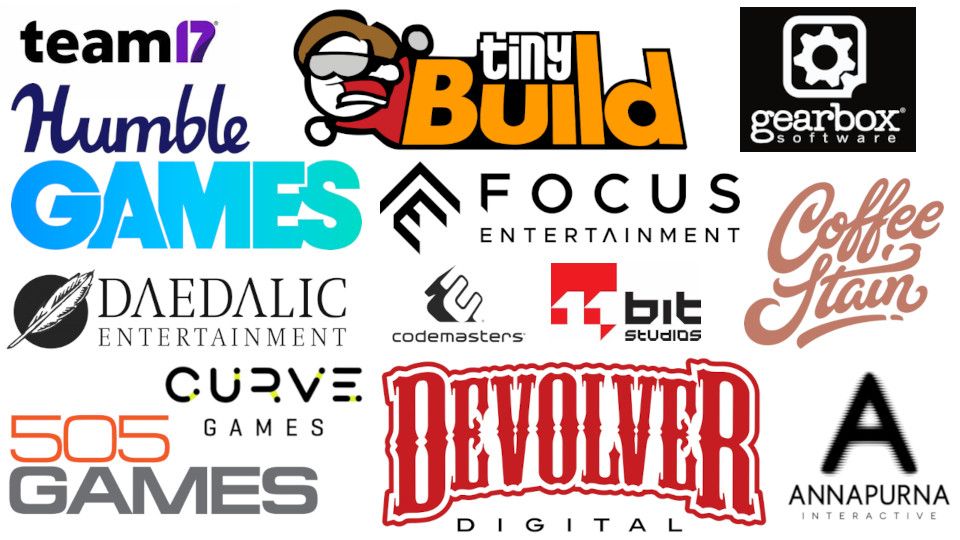
The Rise of Indie Game Publishers
Over time, the definition of “indie game” has become more and more nebulous. When 99% of new games can be classified as indies, the term turns into more of a supercategory that includes many different titles, teams, philosophies, and experiences.
Nowhere is this more clear than with the emergence of the indie publisher. On Steam, a publisher is not strictly necessary — anyone with the modest sum necessary to submit can see their game put on sale. Working with a publisher has many advantages, such as marketing and press contacts, more resources for development, and increased chances of console releases. Of course, this comes at the cost of a smaller cut of the profits and less creative control.
So is it worth it? That's not an easy question to answer.
Per VG Insights, there are advantages to partnering with what they call an indie publisher - a category that includes companies such as Team17, Tinybuild, Daedalic, Humble Games, and PlayWay. Games released through these publishers score about 6% better on Steam and are around 12% more likely to generate in excess of $5,000 in revenue. These are small bonuses, but in an overcrowded marketplace, they may count for a lot.
Publishing through an AA publisher like Devolver, Gearbox, Coffee Stain, or Deep Silver has far greater benefits. Games published through these comparatively prestigious outfits enjoy Steam scores that are 17% higher than the average self-published game and are 48% more likely to make over $5,000.
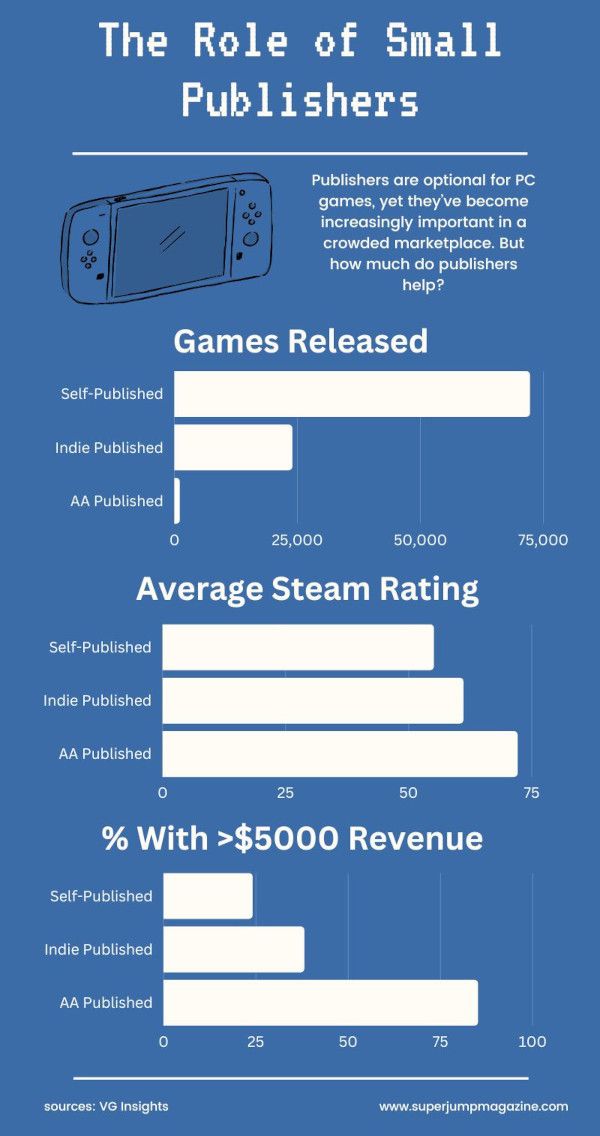
Of course, since games released through publishers still have to be accepted, we encounter a causality issue. Do these games do better because they have the resources of a publisher, or do publishers select games that are more likely to do well?
"My general inquiries about publishing studios leads me to believe that their overall influence (indie or otherwise) isn't great unless there's some huge success they can hang their hat on," Mottzy shares. "There's just too many different names out there for any individual studio to be well known in general. In my opinion, as a developer, I think studios should focus on the success of their games instead of their overall influence on the industry. The influence would follow the success, and it's already hard enough to make a game successful in this competitive market."
Martin Melichárek has a different take: "Very large studios are best situated to continue focusing on their strong IPs, while indie developers are likely safest partnering with publishers that are able to secure promotion and funding for their games. In a very real sense, it feels like a mild return to the 90s era, with publishers playing a pivotal role in the release of games, while smaller teams develop them."
"As we see some small indie developers growing and reaching an admirable financial status with their games, it happens that sometimes they want to venture into publishing, especially to avoid certain abuses or mistakes they committed when working with publishers for the first time," says Enrique Colinet. "I really like the idea of an 'indie' publisher helping an indie developer because that is a relation that has been born out of mutual understanding."
The major benefit of working with a publisher might be mitigation of risk. While games in conventional or popular genres can realize modest benefits from using a publisher, it’s the more experimental or emergent games that have the most to gain. Without a built-in audience, the added marketing push can give these games far greater reach than they would on their own.
"I believe publishers at this level should be pushing to support unique and groundbreaking games, ie games larger publishers see as too risky or unproven," says Cole Jeffries of Cole Powered Games. "Finding these niches will be the key to their success, but it also comes with risk."
The Struggle for Indie Game Promotion
If there’s one thing that creative people are sick of, it’s talk of promotion. When everyone competes with the entire world, being good or even great might not be enough to stand out. The video game market is no exception.
The Indie Bandits survey revealed that a significant number of developers don’t have any meaningful plan to promote their games. A surprising number - nearly two in five - don’t even have a website. From my experience reviewing indie games, I've noticed that some developers don't include contact information on their websites. As I tell people, always act as though there are media types interested in your work, even if you’re convinced there’s no interest.
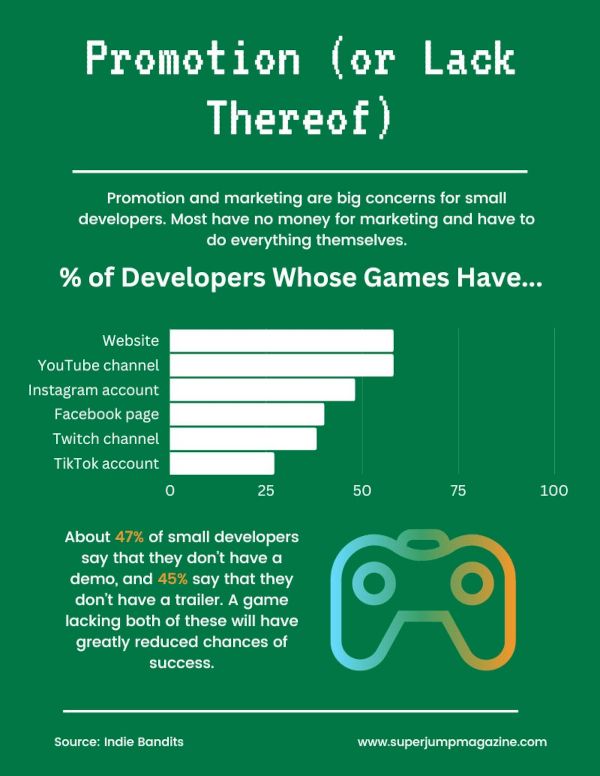
Of course, a lack of contact information wasn’t an issue for the people who answered my survey. For people who are more serious about game development, the next step is finding those interested parties. In getting that kind of exposure, one name keeps coming up: Steam Next Fest.
"Steam NEXT Fest is the single most useful 'marketing' event we had," Nadia Thorne shares. "We shouldn't have taken down our demo after NEXT Fest, our pre-release wishlists just general visibility of DREDGE tanked when we took the demo down and no longer had streamers and YouTubers picking up the game (we thought our game wouldn't be good for streaming, we were wrong)."
The Next Fest events have absolutely exploded in recent years. Over 11 million people viewed the June 2023 Next Fest, a record for the event. Developers can benefit greatly from participating in Next Fest, such as gaining new followers, wishlist placements, demo downloads, and potential press exposure. That's a lot of attention for small and solo developers who may have no other means of getting noticed.
Steam Next Fest continues to stand out as one of the most important, if not the most pivotal, promotional resources for indie developers. However, these digital showcases have significantly grown beyond the traditional thrice-yearly events. Now, there are genre-specific exhibitions, showcases organized by publishers, and an array of mini-expositions presented by various third-party entities. Steam’s showcases have been consistent, with very few weeks passing by without at least one of these events taking place.
Personally, these events have become the primary means by which I find upcoming games for reviews. I probably scroll through three or four per month, and it's rare that I don't come away with at least one prospect.
Like Steam itself, Next Fest is growing ever more crowded. "In the past year or 2, I feel that the 'steam next fests' which were originally to help promote small indie games has become more and more a platform for triple I games which completely take the podium nowadays," says Alexis Giard. "What used to be a great opportunity to get wishlists and a community has become a lot tougher."
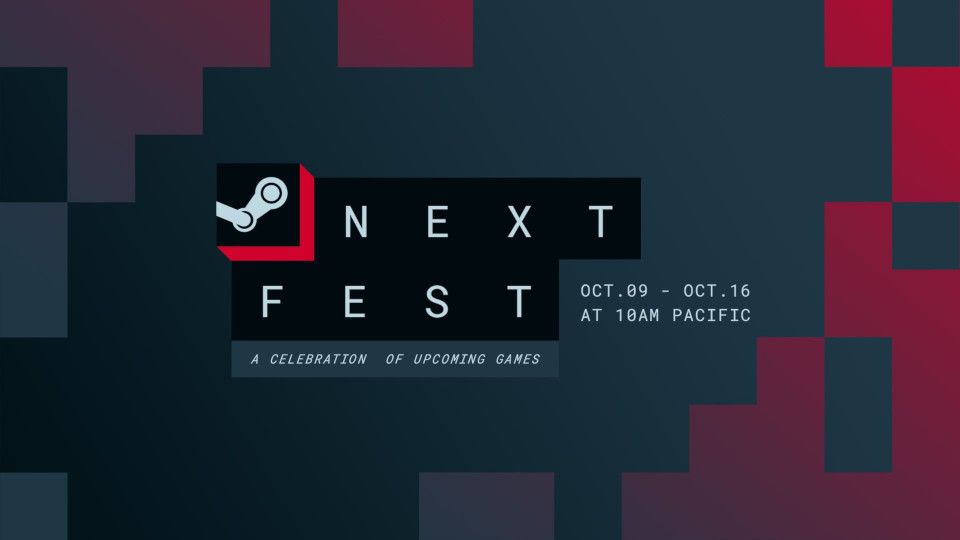
As valuable as it is, Steam Next Fest isn't the be-all and end-all for promotion. Curation and aggregation are increasingly vital means of getting noticed. A developer who gets a game featured on an indie-focused aggregator can get a big boost in visibility, even if that account is relatively small. Having someone present your title directly to a hungry audience is a fantastic way to break out from the masses.
For small developers, the greatest potential source for promotion lies in the people who purchase and play the games - especially those who leave reviews. “If you really like a game and want to support the developer, then please consider sharing your opinions with friends or on social media,” Josh Hallaran highlights. “Word of mouth is an indie’s greatest ally! Leaving reviews on websites like Steam also makes a giant difference.”
Future Promises
The global media market is in a state of flux right now, and the video game industry is far from mature. This provides many opportunities for those willing to take risks, especially smaller developers and publishers.
Subscription services present a major opportunity for small developers. Xbox Game Pass, one of Microsoft’s popular features in recent years, has been successful, inspiring other companies to launch similar services to showcase their own games. Although these services are mostly marketed through their high-profile AAA titles, they also provide smaller studios with a platform to gain visibility. A bonus is that developers don’t need to worry about the details over price points.
"Speaking as a consumer of games, these packages are becoming more and more compelling as they acquire high-quality indie and AAA games - to the point where it almost seems foolish to invest in direct game purchases when you can get a treasure trove of new games to play for the cost of buying a couple of AAA games," adds Ross Przyblyski. "Assuming these service providers can continue to maintain high-quality catalogs, I think this creates a lot of pressure for indies to either seek deals with these services and/or try and create something that can stand out as either a must-play game or a service-based game that can maintain a fanbase for a long time."
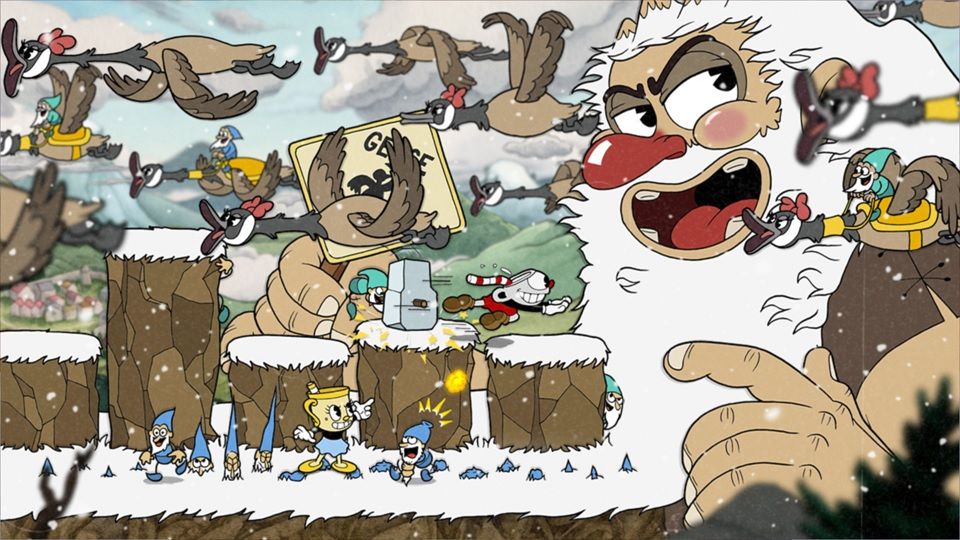
That last point offers another option for the aspiring game developer. In recent years, many mid-sized development companies, such as Paradox Interactive, have shifted to a live service lite model built around DLC, a move that has been highly profitable. Studio MDHR had great success with the surprise Cuphead DLC released last year, showing that this approach could also benefit smaller developers. With the market growing faster by the year, sustaining older games for longer might be the key.
However, the biggest obstacles for small teams have always been access and audience, and here things are changing as well. “Game engines are becoming more user-friendly, leveling the playing field for indie developers,” remarks Aldric Chang of Spiral Up Games. “[Also], the rise of cross-platform gaming, including cloud gaming, will open new avenues and potentially larger audiences for indie titles.”
Another important aspect to consider is that, despite our extensive discussions about platforms, technology, promotional strategies, and finances, the most significant force affecting the indie games scene is the rest of the industry itself. Small developers face their greatest challenges when the AAA developers are at their strongest. While these major companies currently dominate the industry, they are still ripe to be deposed.
At the beginning of this article, I said that the gaming press views indie games through a David versus Goliath lens which isn't really true. What if that view, however inaccurate, is the biggest upside of all?
John Baez is the president of The Behemoth, one of the early success stories in indie, and still responsible for some of the best-selling indie titles ever. Much of what he said echoed what I heard from other developers and publishers, but there was one thing that stood out: "I think solo/small team devs can make it in the current conditions and the press always loves the solo dev narrative and rightly so. Solo devs should never doubt their work, unless they are just doing derivative ideas without any originality."
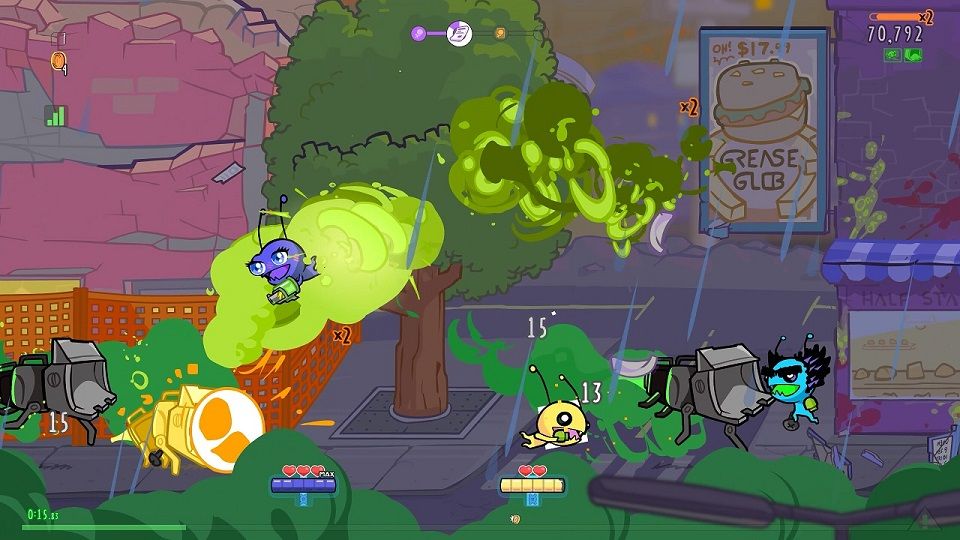
Every small developer’s ace-in-the-hole is that everyone wants them to succeed. The industry is in a terrible place, burdened by years of scandal, controversy and ruinous press. We celebrate when a big company has a setback and rejoice when a newcomer triumphs. And in such an environment, the best thing that any developer can do is resist the urge to imitate those big developers and stick to their own strengths.
Put simply, the tragic state of AAA development has created an opening for something new to take its place. Who knows? 2024 is looking to be a big year, and it could well be a turning point.
My Own Wild Predictions
It is a fool who makes hard predictions, but sometimes the temptation is too great. As with previous years, I now take a stab at foreseeing what’s coming over the next few years. There are no promises made and no refunds will be offered.
- Tools employing “artificial intelligence” will cause a flood of shovelware titles comparable to what we saw after the launch of the Unity Asset Store. What impact this will have is going to depend on how Steam reacts to it – and, of course, they have a history of handling such issues badly.
- While open-world and other thousand-hour games will continue to dominate the sales charts, there will be an increasing demand for more conventional titles – things that appeal to the nostalgia of an aging game playing population. More experimental game will remain on the sidelines, at least for now.
- As the industry continues to spread, it will represent a wider variety of countries among the ranks of significant developers. In particular, we will see notable releases from upstart African and Latin American developers as those markets continue to mature.
- With some AAA developers having great success with relatively small games, we will see an increase in the number of small team titles published by large companies, further blurring the line between the core of the industry and the indie scene.
- As we leave the age of the kingmaker influencer behind us, we'll see an increase in the importance of smaller, more niche curators and websites. Most developers will have better luck working with people who specialize in their subgenres than they will with more mass-market sources.
- Meanwhile, the larger personalities will continue to use the Platonic ideal of "indie gaming" as a bludgeon in their campaign to bad-mouth AAA companies while failing to promote any but the absolute biggest of indie games (Yes, this one's a gimme, but please somebody prove me wrong).
So what does 2024 really have in store for the indie game community? I suppose we'll find out together!
